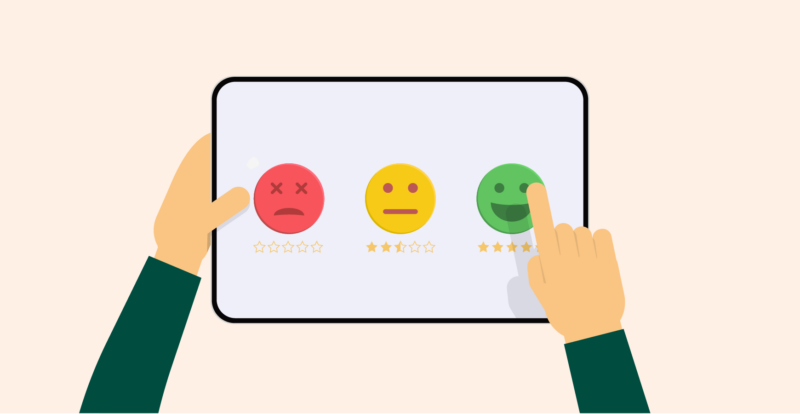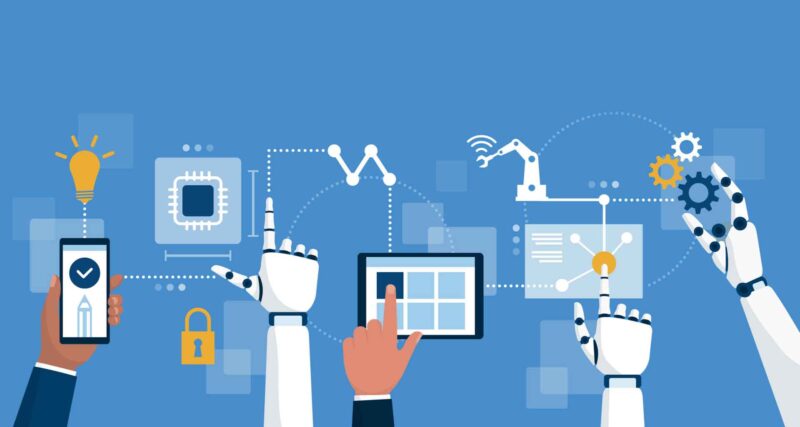Maintaining and gaining new customers is greatly influenced by customer service. However, the entire funnel, from how a customer interacts with the business to purchase and beyond, should be more important to business owners.
The fast-evolving technology is playing a key role in smoothing the interactions and processes involved (pre-purchase, purchase, and post-purchase), making them as efficient as they can be. This increases retention rates and the likelihood of enjoying referrals from existing customers. With that being said, here are some ways you can leverage technology to boost customer experience.
Collect Feedback Through Surveys

Today, the majority of businesses have completely integrated digital platforms that provide automated customer feedback and surveying. It is probably the best way to boost customer experience; by directly asking customers what they think needs to be improved or what areas they enjoy the most.
You can send simple automated questions to customers after a purchase even on their smartphones. A great example would be a short survey prompted when a customer is about to unsubscribe from a product or email list. The data collected can then be used to improve the overall customer experience.
Automate Services
Tech facilitates the automation of key services like ordering products, payments, and feedback processes. Consumers love a flawless purchase because it eliminates the hassle of numerous complicated steps and thus saves their time. It also eases the making and processing of international payments and refunds through a credit card or PayPal account without having to convert currency, which minimizes errors. Using straightforward automated processes makes the customer experience effortless.
Schedule Callbacks
To be on hold for minutes on end is slowly becoming a thing of the past. Prioritized and scheduled callbacks ensure all urgent issues are solved before jumping onto other issues. Consumers no longer feel abandoned or frustrated because their concerns are looked into. In addition to an organized call response stream, it ensures convenience for the customers, relieving them of a load of negative emotions.
So, you no longer need to spend time searching for your next assistant and use more of that time to meet your customer’s needs. However, if you need any other professional like an IT guy to ensure everything works seamlessly, Leadar is a great tool for you.
Real-Time Communication

Customers expect your business to be reachable through phone or messages. Although some communication channels such as email are seemingly dead, others are consistently coming up. Facebook Messenger, for example, has pushed real-time communication a thousand light years and is seeping into other social media platforms. These days, customers can have authentic one-on-one conversations with businesses in real time through face-to-face videos or chats from wherever part of the world they are as the world time is also synchronized.
Virtual and Augmented Reality
VR and AR have become the go-to place for businesses looking to offer their clients a fully immersed experience of their products and services before making a purchase. This one-of-a-kind technology offers 360-degree tours, 3D presentations, and 7D experiences. Your customers are in a better position to make more informed purchase decisions because of the immersive experience.
Data Storage in the Cloud
Gone are the days when businesses relied on their organization systems to manually collect and save information about their existing consumers and prospects. Storing data in the cloud has been happening for a while now, and is consistently improving. Technology has made the backend process much easier, even for smaller startups without access to high-tech expertise. The saved data is useful for personalizing marketing and sales campaigns, which has a knock-on effect on customer experiences.
Gathering and Analyzing Data

Understanding your consumers and their characteristics goes beyond listening to them. Data technology has now made it easy to collect and analyze customer data and behavior critical to running a business. One branch of tech in particular that has been embraced by most businesses is Artificial Intelligence. Its integration helps collect data on how customers interact with your products. With accurate tracking, finding a potential breakdown in the customer journey and conversions becomes effortless.
The Mobile Transition
By the early 2000s, the phone business was already peaking. Nowadays, almost everyone owns a smartphone. Businesses have leveraged this technology to boost experiences by connecting with consumers better and offering a more personalized experience. It has boosted the power of communicating in real time either through texts, audio, or video calls. It goes a long way in offering emergency customer support, especially in businesses where an emergency could mean life or death.
Personalizing Customer Experience
Advanced data analytics and predictive tools can help make more personalized suggestions for your customers. For instance, machine learning technology is a versatile solution for collecting customer data and using this knowledge to make future recommendations and suggestions based on behavior and patterns. With the best quality of sorted data at the right time, businesses can easily boost their sales, and satisfy their customers through a seamless purchase process and interaction. Besides, this technology is useful for reducing losses and increasing conversion rates.
Self-Service

Perhaps the best gift technology has extended to businesses is the ease of integrating self-service in the customer journey. Most people dislike the need to seek assistance whenever they need to make a purchase. Again, some of these consultation processes are long and tedious. Self-service, therefore, comes as a blessing to many businesses.
Restaurants, for example, have automated menus, ordering and payment processes. Self-reliance has proven to be one of the best ways to boost customer experiences. To teach customers how to independently navigate through the purchase process, you can share informative material such as eBooks, blogs, podcasts, and videos with your prospective and existing customers.
Conclusion
The need for digital experiences has helped businesses transform their products and services and improve their customer experiences to meet their consumer’s expectations. Technology improvement is dramatically changing the way organizations provide value to their consumers or grow their profit. However, if you want to really understand and fully provide for your customers, augment some of the automated processes with human interaction. Despite the many benefits of technology, it can never fully replicate the human ability to empathize and resonate with each other.

